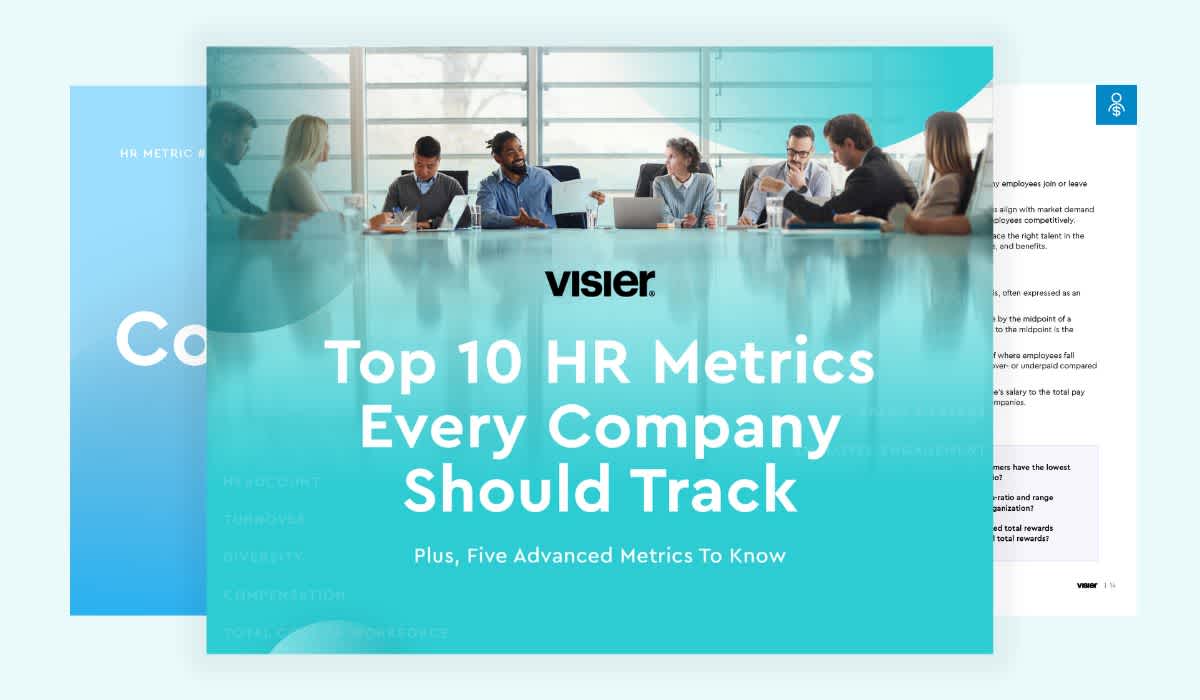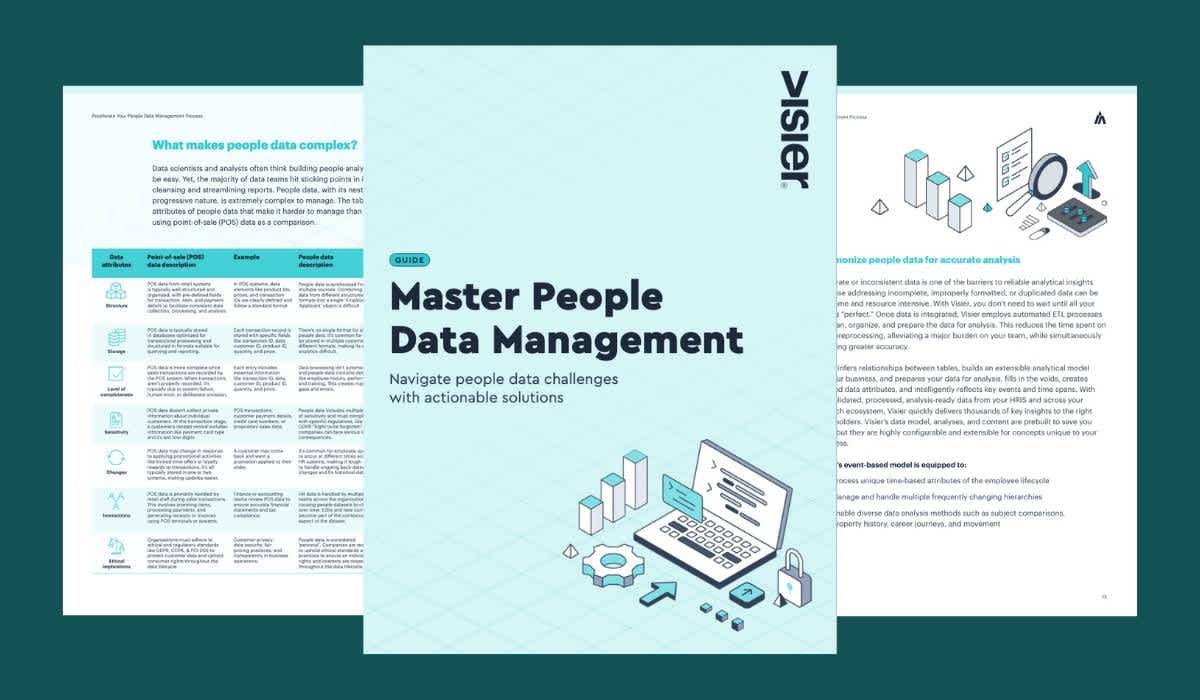Why Internal Mobility is Key to Building a Diverse Workforce
With the right approach, fostering internal career growth and boosting DEI success can go hand in hand. Learn how in this step-by-step guide.

Ensuring people from diverse backgrounds have a fair shot at C-level positions is crucial. But often, leaders “miss opportunities to unleash diverse talent at lower levels,” states DDI’s recent diversity & inclusion report, which analyzes responses from over 17,000 human resource executives and leaders globally.
This could explain why representation levels are unbalanced for so many organizations. According to Mercer’s research on racial and ethnic reality in the U.S., the “representation of people of color (both men and women) decreases incrementally as career levels rise.” When this kind of pyramid shape shows up in your workforce data, it’s a signal that something needs to change.
Internal Mobility Matters—Here’s Why
Often, the career development aspect of DEI is overlooked: “Across all levels, minorities were significantly more likely to say they expected to have to change companies to advance,” the DDI report reveals. Internal mobility—moving employees within the organization for career transitions and development—helps nurture a culture of personal growth, which is key for maintaining morale and boosting the retention of high-performing employees. According to SHRM, people “usually feel more engaged when they believe that their employer is concerned about their growth.”
Of course, internal mobility is not synonymous with promotion opportunities. But modern careers are more like jungle gyms than ladders, with the right vertical and lateral moves contributing to advancement over time.
In addition to boosting employee retention, this can also support a strategy of hiring from within the organization instead of competing on the open market for talent. “An organization’s biggest potential talent source may be its own people,” states Deloitte’s Global Human Capital Trends report. This is critical, particularly when skills gaps are a threat to business success.

This analysis breaks down skills by department within a company, helping to surface where there may be skills gaps. Fictional data used.
Stela Lupushor, Founder of Reframe.Work, makes this link between upskilling and market demands in our new report, HR Trends 2021: People Strategies for an Uncertain Future. “Despite the current labor markets, there are fewer digitally-savvy candidates in the market. Companies now have to rethink their workforce and hiring strategies and instead invest in upskilling their workforce,” she states.
With the right approach, fostering career growth and boosting D&I success can go hand in hand. The key is to go beyond your overall representation numbers and dig deep into your workforce data. For example, female ratio and minority ratio will only tell you how many women and minorities you have throughout the organization and in each department, location, and job function. But if you look at how a particular population is affected over time, you can gain a better sense of whether they are getting the needed growth opportunities.
Below are some questions you can ask of your workforce data to foster internal mobility, retain diverse talent, and ward off skills gaps:
Step 1: Investigate bias
Before you dive into career planning and personalized development, the first order of business is to determine whether your organization has an issue with bias. Instead of just collecting and reporting headcount numbers, ask: Are diverse people with long tenures and a history of high performance getting promoted?
For one client I worked with, we looked at high performers who had a tenure of three years or more, and we noticed that people from diverse backgrounds who fell into this category were experiencing promotion stagnation. There may be legitimate reasons for this pattern, such as a lack of skills or experience. Skilled trades, for example, often have fewer women in senior roles because there is a lack of females in the overall talent pool. This is an issue that needs to be addressed separately from (but sometimes in addition to) bias through learning programs and external partnerships with educational institutions.
But if you see that women and minorities actually have the same qualifications and are not being promoted, it’s an indication of bias. In this case, consider following up with individual managers who have a pattern of not promoting diverse employees.

With this analysis, you see the mix of employees in the succession slate from a gender perspective. Fictional data used.
Step 2: Look at opportunities on the horizon
A “growing from within” strategy can be a good approach for getting more diversity in higher level positions over time. This requires you to determine where there will be open opportunities based on your business strategy.
Look at your workforce plan to determine where your business is headed and what roles are going to take you there. For example, your organization may be planning to open a new location or introduce a new business line or is pivoting to a new business model. The current market situation is unpredictable, but the right workforce planning solutions will allow you to make plans for multiple situations (like this financial organization did), whether it’s fast growth or no growth at all.
Once you have identified whether you have any skills gaps on the horizon, evaluate your internal candidate pipeline to determine the mix of employees from both a gender and minority employee perspective. Whenever the diversity pipeline is lacking for potential open positions, take the opportunity to forge new career paths for more employees.
Step 3: Identify realistic career paths
Asking team members what excites them can be a good career planning conversation-starter, but relying on open-ended questions won’t produce results. Your managers also need to become skilled at shepherding people along realistic paths if they want to be good career coaches.
To do this, you need to ask: What are realistic paths for getting people in lower-lever positions to that point? Assess where your talent has come from, and what skills they bring to the table. The right analytics platform will analyze an organization’s historic people data, and calculates the many routes employees have taken from one role to another. The outcome is a map of all the career paths taken within an organization, with insights into the fastest and most common paths.

Digging deeper into the career path analysis shows the different jobs Annie can take to achieve her goal job title. Fictional data used.
Also consider unconventional career paths. Your organization will only get so far if you are always promoting people with similar backgrounds into the same roles. To generate more diversity, ask questions like: Are any of the people who moved into technical roles in the past from other disciplines? Are they women and minorities? What kind of roles served as stepping stones to get there? You can then encourage more employees to follow those paths.
Step 4: Measure progress
In 2018, Merck KGaA leveraged people analytics and a variety of HR tools to increase the representation of women in leadership positions. By the end of 2018, women occupied 32% of leadership roles (manager-level and above) group-wide–exceeding their 2021 target of maintaining a 30% representation of women in these positions.
However, though their figures are increasing steadily across the company, this is not the case within all business units, group functions, and hierarchical levels. Therefore, the organization is developing processes and implementing programs to increase female leadership where they are still underrepresented.
As the above example shows, people analytics can make diversity and inclusion measurable, and as the saying goes, what gets measured gets managed. Compa-ratio, which is the ratio of an employee’s or group of employee’s pay to the pay-level midpoint for a given role, is useful for evaluating how relatively well-paid someone is and whether there is a gender- or minority-based pay disparity in your organization. Pay disparities, particularly among high performing individuals with longer tenures, can be a sign that diverse groups aren’t getting the advancement opportunities they need to grow their careers.
Walk the diversity talk with career development
By giving people real opportunities to advance, you aren’t just limiting D&I to a nice-sounding value statement on your company website. Asking the right questions of your organization’s historical data enables you to better align individuals from diverse backgrounds with realistic–and rewarding–career paths.
On the Outsmart blog, we write about workforce-related topics like what makes a good manager, how to reduce employee turnover, and reskilling employees. We also report on trending topics like ESG and EU CSRD requirements and preparing for a recession, and advise on HR best practices like how to create a strategic compensation strategy, metrics every CHRO should track, and connecting people data to business data. But if you really want to know the bread and butter of Visier, read our post about the benefits of people analytics.


